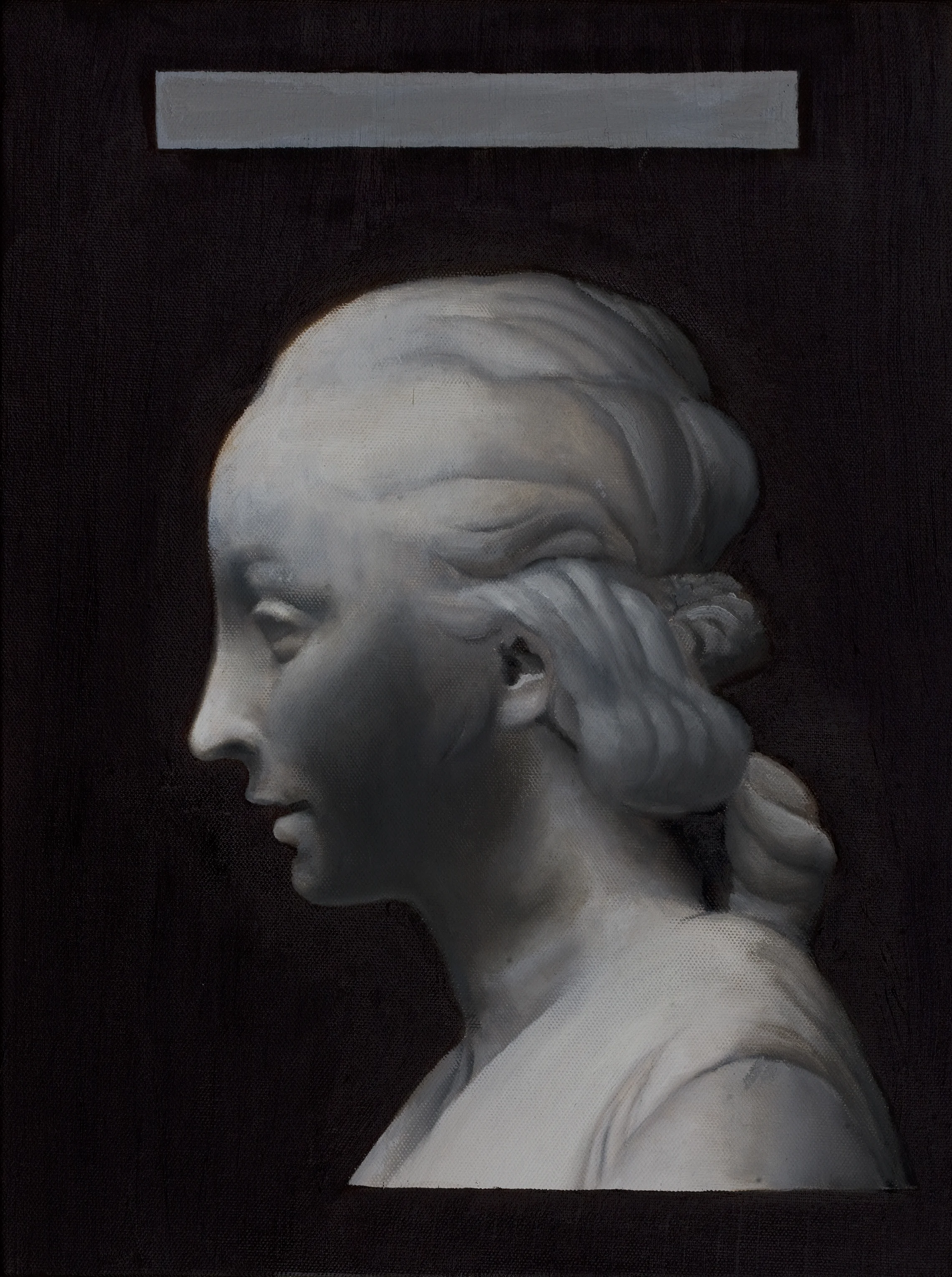RUTH GRACE JERVIS: DEFLECTED ICONS
BY PETER FRANK
In her recent painting, Ruth Grace Jervis has turned to the landscape as a subject – or, perhaps more to the point, added the landscape to the range of subjects she paints. In traditional terms, at least, this would seem a notable expansion on Jervis’ previous work, which featured renditions of objects, including figural sculpture. The jump, admittedly, is not as radical as that she made years ago from abstraction to the veristic realism that now characterizes her production overall. But in terms of image – and in the terms of pre-modern western art, a visual world Jervis would seem to have adopted wholesale – the broadening, from thing to space, is profound.
Jervis’ adoption of antiquated pictorial values is anything but reactionary. Loaded with critical reflex, the irony undergirding this aesthetic strategy gives that strategy a new, skeptical, and even urgent cast. An element of social critique, one applicable to the present day, and applicable to discourse outside as well as inside art, emerges from Jervis’ representational work, earlier and later, but especially recently. The shift from still (or not-so-still) life to landscape embodies a pivot in message, entirely within a consistency of purpose.
It is important, even crucial, that we understand Jervis’ work not as an anachronistic gesture, but as a contemporary gesture that critically engages anachronism. These pictures, whether of statues or of valleys, do more than emulate their stylistic models; they re-purpose them. They present themselves to us like old mirrors, the reflective material partly worn away but still giving us back an image of ourselves. What we “see,” of course, is not our visages but our ideas, our concepts, our presumptions. Jervis’ paintings do not satisfy our expectations so much as they embody them, wresting them away from us in order to permit them autonomy – certainly enough to answer back to us, like grown children confronting complacent parents.
Jervis’ emulation of painterly practices that were long ago outmoded by the conditions of modernism – especially by the replacement of painting with photography as the visual medium of record – relies far less on nostalgia (aesthetic or social) than its tropes would suggest. Rather, she concerns herself with the survival of artworks, and artistic idioms, into a present they no longer (at least directly) address. She concentrates on the depiction, and recapitulation, of artifacture. Jervis paints pictures of things and in that very process produces things that are artworks – something every painter does, of course, but Jervis does so with that reflexive conundrum very much in mind. A picture of an artifact is itself an artifact, a point Jervis drives home with her iconized renditions of statuary and trompe-l’oeil depictions of books and other verbal devices (all of them, significantly, based on superannuated models such as pre-modern bookbinding and banner heraldry).
There is a yet more substantive side to the spirit animating Jervis’ project, coursing somewhere deep below the surface of her vivid pictorial world(s). Not only has the context drained out of these subjects, but so has their ability to mean as they once did. The resemblance or reference of Jervis’ images to various artistic monuments, specific or generalized, plays upon the unvariegated access we now have to those monuments, either in museums or on line. Worse, the models she has paid fitful homage to are themselves endangered. What Jervis paints was once regarded as the legacy of humanity, and even of nature. But she paints them in such a way that their fragility overtakes their durability – the landscapes no less than the objects. Jervis’ oeuvre persistently whispers a haunting thought: ars brevis.
This poignant pessimism is one of the most enduring, and moral, sentiments of the post-modernist ethos. Ruth Grace Jervis’ art is ridden by this sense of loss. She mourns not so much for the civilizations that generated the artifacts concerning her as for the basic human impulse to nurture, celebrate, and be surrounded by beauty and harmony. Climate change erodes everything we hold dear; art is the canary in the coal mine, but nature is also suffocating, more and more visibly. It makes sense, then, that Jervis would contemplate not just the beauty of the art object, but the beauty of the natural object – the thing and, equally, the atmosphere around it, both fading fast. Homo sapiens is an endangered species.
